Pining for the fjords

Pining for the fjords indeed! We cruised on them, drove along their shores and crossed them on huge bridges and expensive ferries – fjords are cool!
Monty Python has a lot to answer for. Their offbeat British humour from the 1970’s brought many new phrases into the English lexicon, including the poor Norwegian Blue parrot that was ‘pining for the fjords’. We’re in much finer health than that bird and our attention in Norway had now turned towards the magnificent fjords that crease its shoreline and create one of the most spectacular geographic and geologic settings in the world. Our first taste of the fjords near Bergen left us pining for more so we moved north to dive into the heart of fjordland.
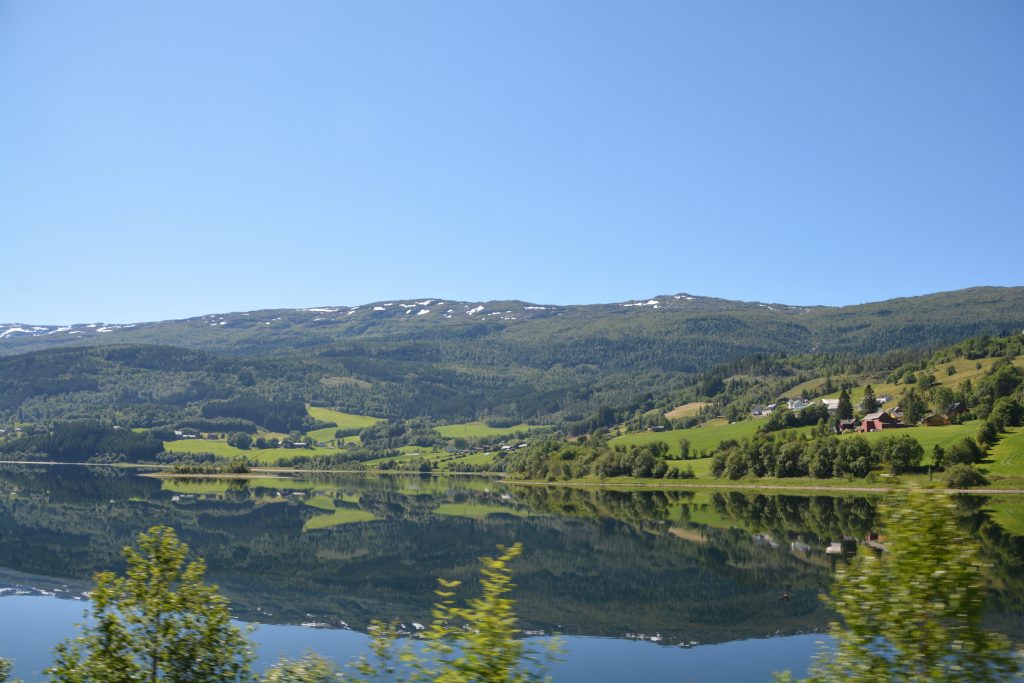
It’s not all fjords. Many of the snow-melt lakes provide a perfect reflection under the perfect blue skies
The coast of Norway is completely sliced and diced by around 1,200 fjords, all carved by mighty glaciers all those millennia ago. Some of the fjords can reach hundreds of kilometres inland and have vertical granite walls of up to 1,200 metres. They frequently have branches or arms, some of which are more famous than the original ‘parent’ fjord. Small villages often hang on small semi-flat areas of their coastline and fishermen, ferries and even cruise liners can be seen motoring up and down their narrow channels. Any way you look at them, they are drop-dead gorgeous.
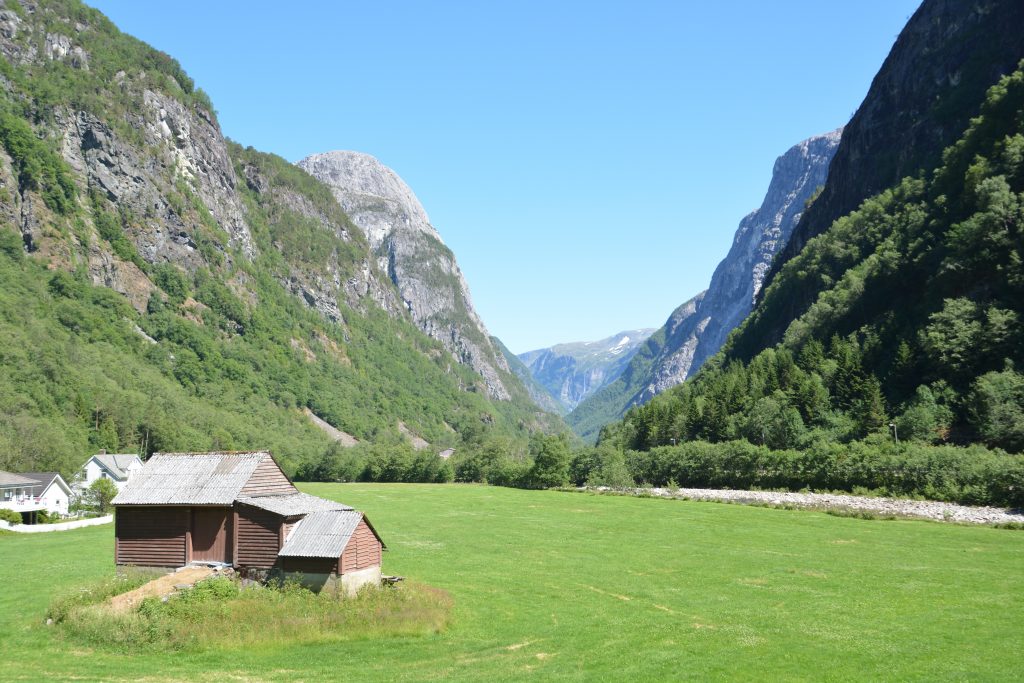
Some glacier-carved valleys never make the ocean so technically they’re not fjords but they still look pretty good
Our target for the next couple of days was the huge Sognefjord Fjord and to get there from Bergen we followed a string of minor fjords, glacier-carved lakes, racing mountain streams and deep green valleys through the summer playground centre of Voss and stopped at the magnificent Tvinnefoss Waterfall. Disneyland couldn’t have created a more picturesque scene of water finding different paths to bounce down the steep rocky slope. A great place for lunch.
But if you have deep fjords, high mountains and roaring rivers the next thing you need is tunnels. Norwegian engineers have been digging and drilling in overtime to connect the valleys with a series of tunnels through these granite mountains that range from 50 metres to over 25 kilometres. We would often be stretching our neck to take in these stunning views only to be suddenly covered in darkness for the next few kilometres, then burst back out to another spectacular view in a completely different valley. It was exhausting stuff.
After a 12 kilometre (7.5 miles) tunnel, breath of fresh air and another 7 kilometre (4.4 miles) tunnel we popped out at the small town of Flam which is beautifully positioned at one of the ends of the Aurlandsfjorden. We camped that night in the nearby town of Aurland, nothing more than a village clinging to the steep mountain face, with a beautiful mountain-fresh stream passing just next to our camp. The temperatures were unseasonably high, the skies perfect blue and the land paradise green.
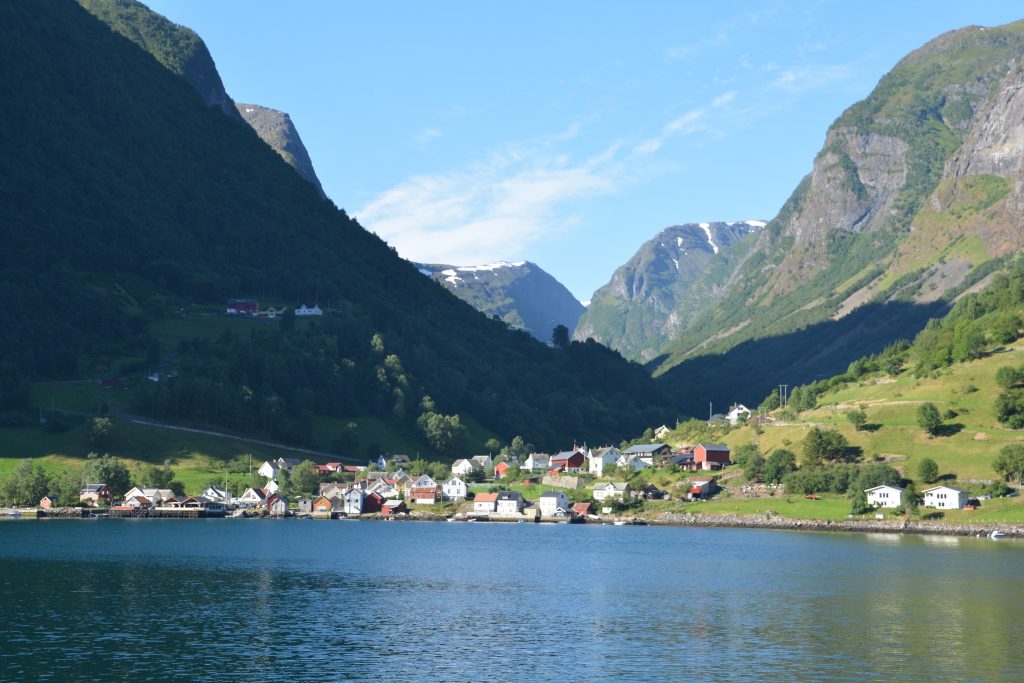
These little villages were often squeezed into any flattish land between steep mountains and deep blue water
The next morning we caught the ferry which took us up the Aurlandsfjorden and then turned down the narrow Naerofjorden to the ancient Viking town of Gudvagen. This UNESCO World Heritage fjord must be one of the true gems of that illustrious list – still dark blue waters, high near-vertical walls, waterfalls pouring off everywhere, snow patches topping the mountains. At the narrowest point the fjord was only 250 metres wide and the walls soared almost 1,000 metres above us.

Our ferry boat which took us up the World Heritage-listed Naerofjorden Fjord – an unforgettable experience
As we slowly cruised through this geologic wonderland, past the small summer communities that speckle the few liveable places, we marvelled at the force of nature for creating this spectacular place and for the people who have lived here for centuries. Amazing stuff.
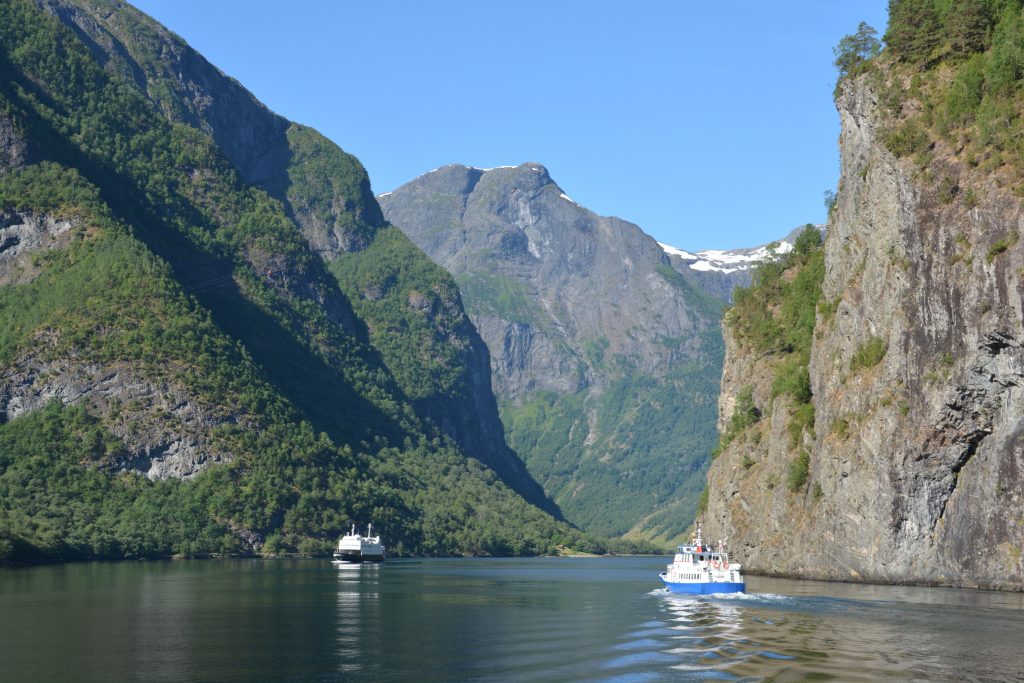
The Naerofjordan Fjord had plenty of tourist boats – and even groups of kayakers – who were enjoying the spectacular scenery
Having seen the fjords from the water level we were still pining for more so we drove up the narrow – sometimes very narrow – one lane road through a series of switchbacks to the vertigo-challenging lookout point called Stegastein and then followed one of Norway’s nominated National Scenic Routes, called the Aurlandsfjellet.
This drive, open only in summer, climbed to the top of the fjords and followed a series of ridges, dips and saddles for 47 kilometres until it dropped down into another valley and another fjord. This was fjord-viewing with a difference – high above the water, weaving through endless mountain lakes and patches of snow, stopping regularly to gasp at what laid out before us. Julie and I have had the fortune of many beautiful drives on our trip and this one is definitely a top-weight contender.
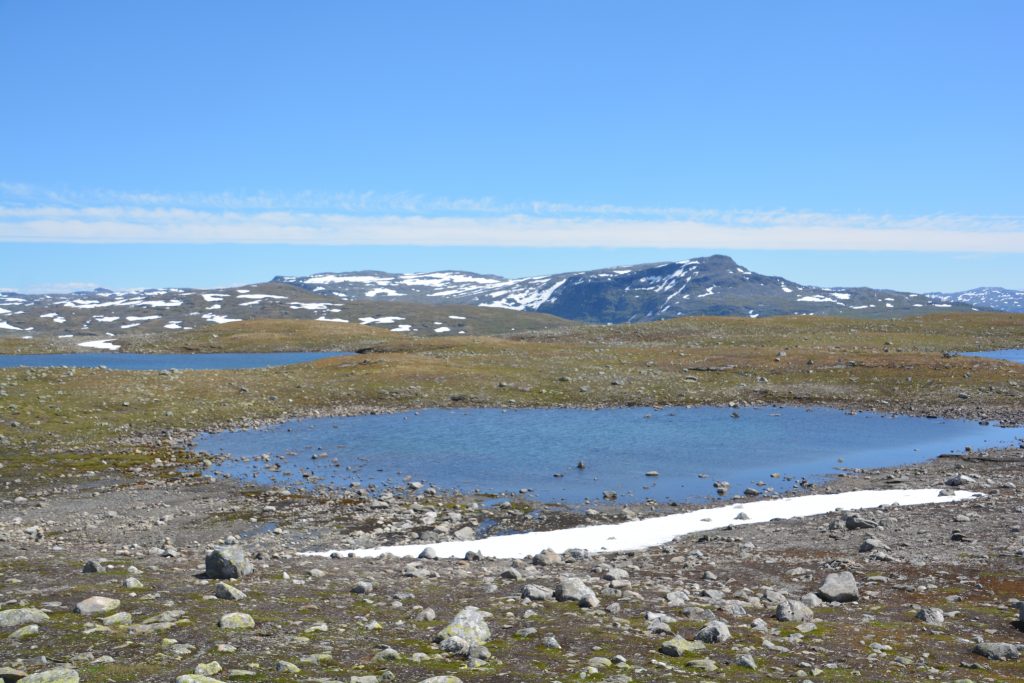
The National Scenic Routes that we’ve travelled so far have been absolutely fabulous, including the Aurlandsfjellet
After a ferry across another fjord – will they ever end? – we camped on the banks of a different fjord at a place called Kaupanger. It had definitely been a fjord day – first the cruise, then the drive, then a ferry, then camping on the water. How much pining for fjords can a guy take?
Well, that question may get answered because there’s a lot more fjords ahead of us. But before then we came to that inevitable sad moment when Anna, Carl and Abby had to turn south to start their long journey back to Australia while we were heading north to the Arctic Circle and beyond. We had travelled with them for almost two weeks and it had been some of the best travel days Julie and I have ever had. Abby probably didn’t get a great sense of Europe but she definitely revelled in the whole camping scene and her grandparents couldn’t get enough of it.

Ferries and tunnels are a necessity when travelling through the fjords – unfortunately because of Tramp’s length he often ends up costing us a fortune
Back in Julie-and-Bill travel mode, we visited the amazing 12th century Stave church near Borgund built just after the Viking era and still standing to this day in its original form. These elaborate wooden churches with their unique Viking design at one stage numbered over 1,000 but today only 29 remain. They are a fabulous testament to the rich history of this beautiful but harsh land and you can’t help but wonder what life was like in these deep wooded fjords over 800 years ago.
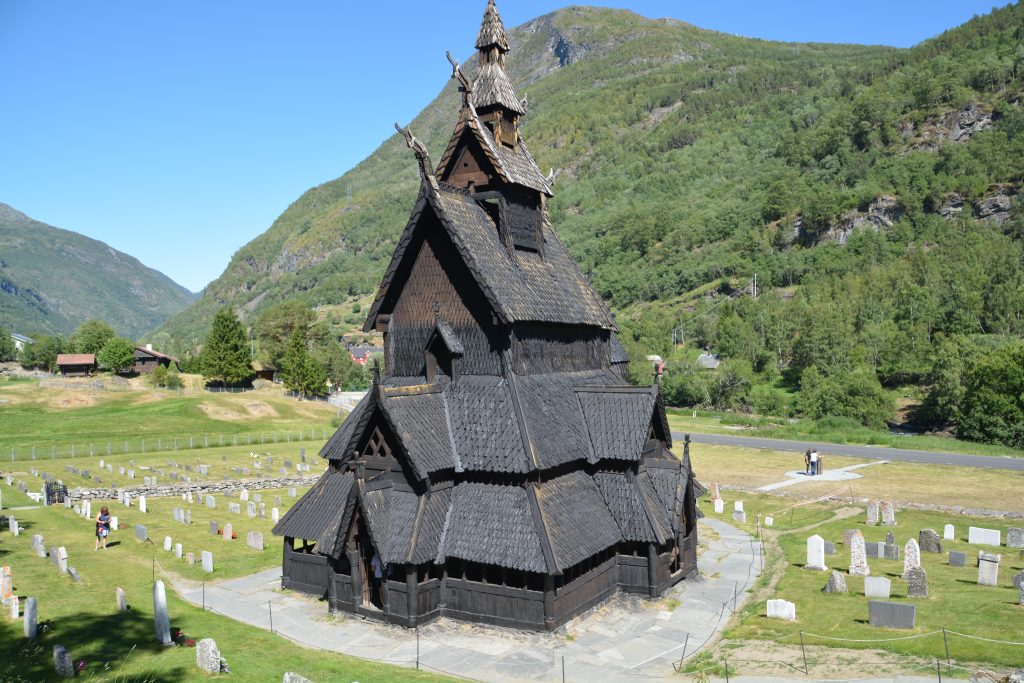
This Stave church was built in the 12th century, an extraordinary piece of craftsmanship, architecture and endurance
We camped that night at the end of the Fjaerlandsfjorden fjord near the small town of Fjaerland in a deep valley with the last remains of a pair of glaciers still doing their granite carving work high above us. The next day our target was another of Norway’s National Scenic Routes as we tried to weave our way around the mountains, along the fjords and through the deep valleys that mark this land.
But first we detoured up a side road between two unpronounceable national parks through a narrow valley with a milky glacier-melt river flowing down the middle to the stunning Nigardsbreen glacier. You could almost imagine this glacier, still weaving its way from water’s edge to high up on the ice shelf, cutting and grinding granite as it moves ever so slowly down the valley. Our lunch scene was almost Yosemite-standards, such was its magnificence.
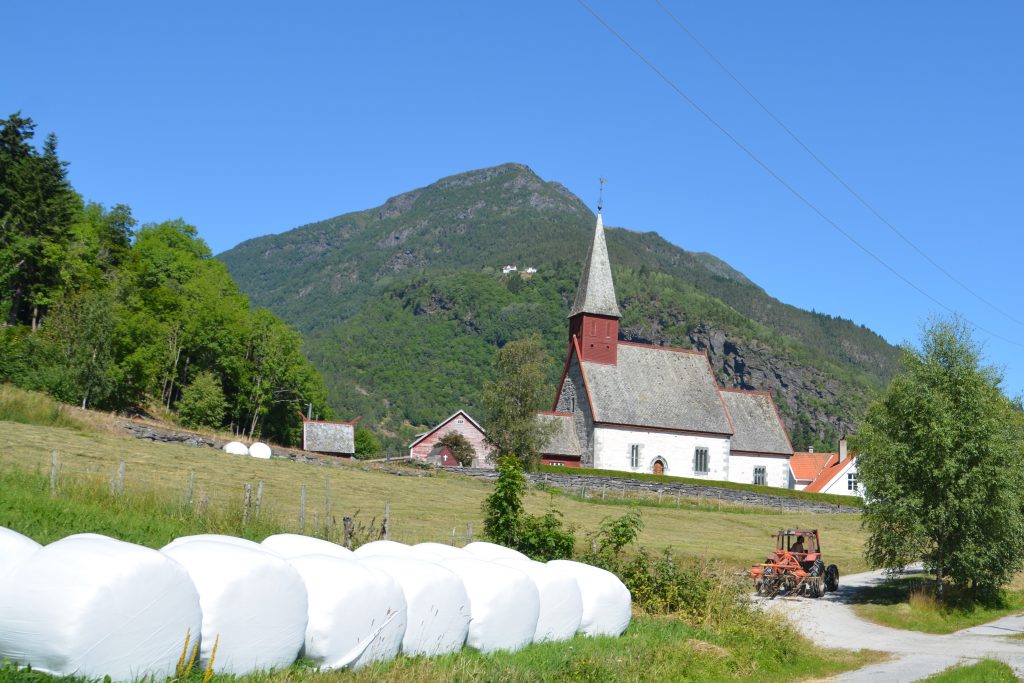
The quintessential Norwegian rural scene – church with high spire, plastic-covered rolls of hay and a tractor
The scenic road, called the Sognefjellet, started by bordering a few deep blue mountain lakes and then tracked alongside the Lustrafjorden fjord using a narrow one lane road that involved squeezing by the local traffic as well as the ubiquitous European-sized RV’s. We were entertained by the endless display of waterfalls on the opposite side of the fjord and the little villages we passed through.
When the fjord ended the mountains began and we switchbacked up and over the mountains, first surrounded by sharp snow-capped peaks, then driving through them, every lookout providing million dollar views. It was such a fabulous setting we decided not to descend the other side yet and camped at 1,370 metres (4,500 feet), our first free camp in Europe, glaciers just above us, glacier-melt lakes in front and behind us, snow patches dotting this extraordinary scene.
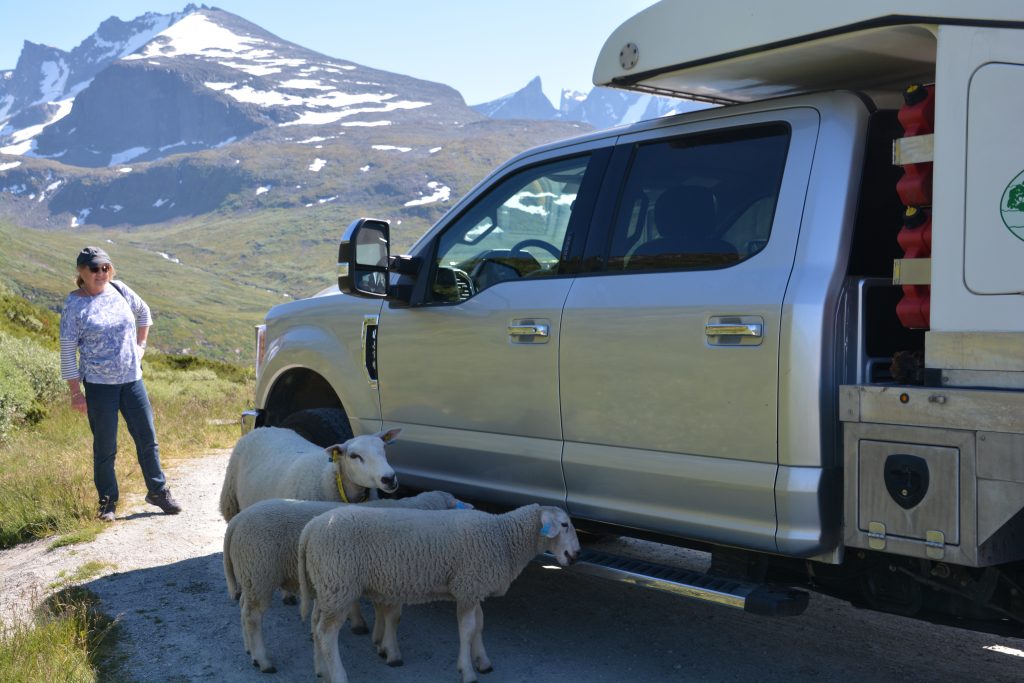
Okay, this is kinda weird. When we came back to Tramp after a short walk these sheep were licking his running boards.
As luck would have it, the next day we had more of the same…only more. We finished the Sognefjellet scenic road and pulled into the cute little mountain town of Lom to check out its 12th century Stave church before heading northwest and doing the Gamle Strynefjellsvegen (sounds just like its spelled!) scenic road. This one lane dirt track took us high into the mountains past milky blue glacier lakes, racing streams, steep-walled canyons – spouting long full waterfalls in all directions – snow patches and glaciers all around us. All this beauty just wore us out.
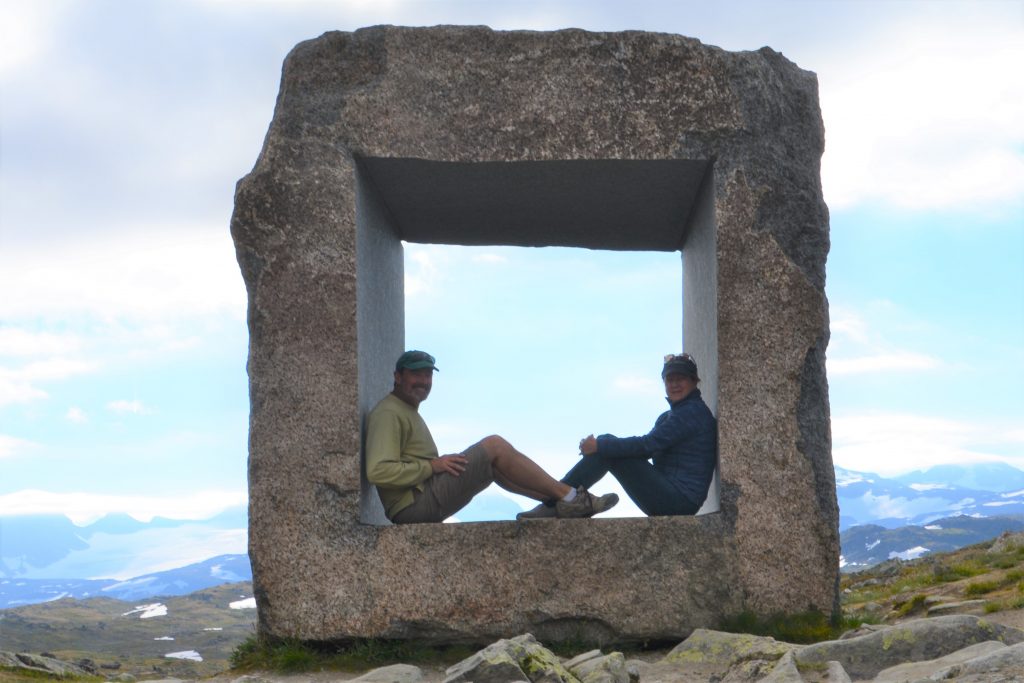
Some local artist set this up at the top of a mountain pass so we took advantage of it for a little rest
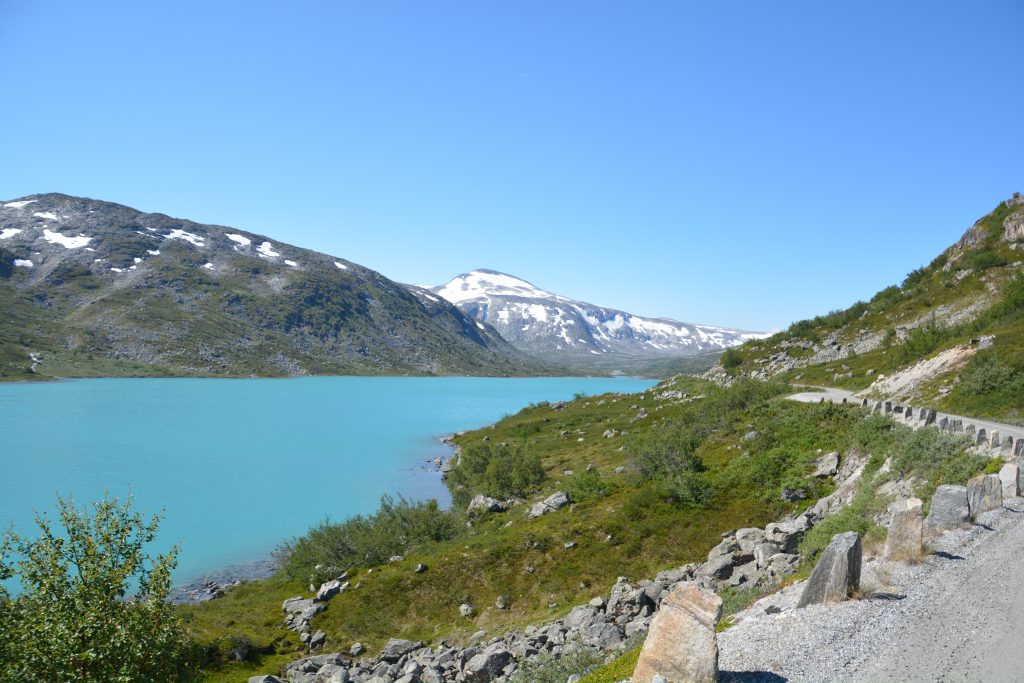
Another National Scenic Route drive – ya gotta love the roadside barriers which Julie described as dragon teeth
But wait, there’s more. We backtracked and headed towards the UNESCO World Heritage Geirangerfjord Fjord which included a side road up to Dalsnibba, probably 20 tight switchbacks up a mountain face to what the Norweigians call a Skysslag which essentially a viewing platform sticking out over the sheer mountain face. At 1,500 metres it was our highest point in Norway and provided views of our winding switchback road all the way down to the Geirangerfjord with three cruise ships resting at anchor. It was the famous Norway tourist brochure photo, dizzily beautiful.
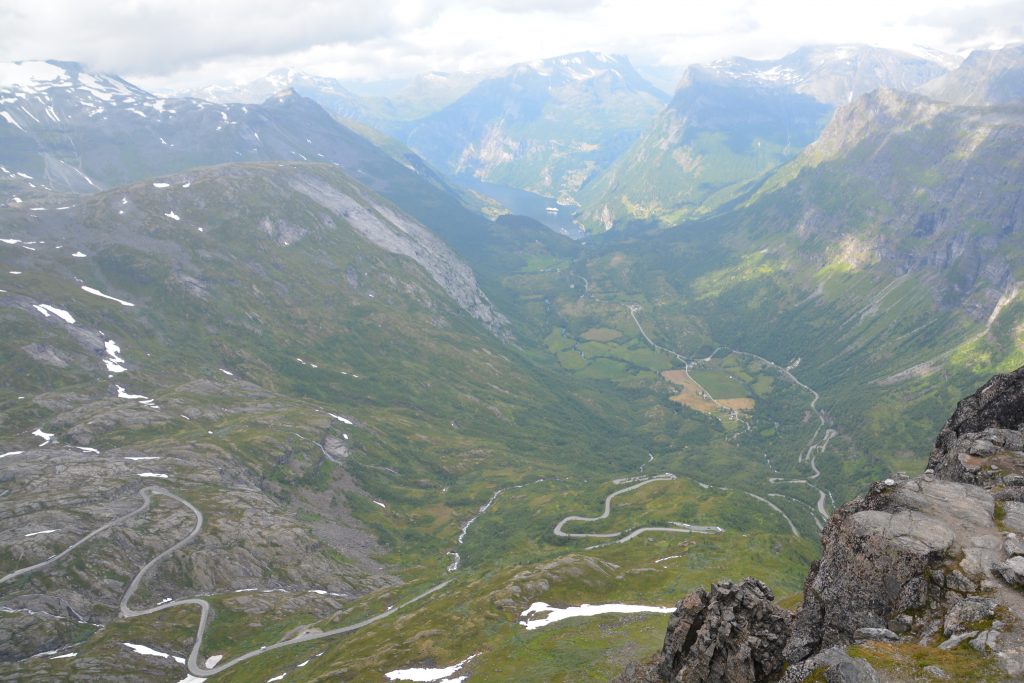
The clouds lifted just enough for us to get the full view from the Skysslag – our winding road down to the famous Geiranger Fjord with three cruise ships barely visible in the distant background
We finished the switchbacks down to the town of Geiranger but with the cruise ships in this small town was not for us so we followed more switchbacks out of the fjord – probably completing more than 100 hairpin turns over the day – up and over the mountain, across another fjord on another ferry and camped on a peaceful little river with the sound of running water soothing our over-stimulated scenery senses.
As we caught our breath that evening Julie said Norway must be the most beautiful country in the world. High praise but fair comment, what we’ve seen the last twelve days has left us speechless. Sure, if you want star-studded mountains go to Switzerland, if you want boundless diversity go to the US, if you love your deserts and beaches head for Australia…and you could name many more standouts. But if you’re looking for one country which provides never-ending jaw-dropping neck-twisting eye-watering superlative-busting beauty you need to head to Norway.
And here’s a few more fun facts about Norway. Norway has the fourth highest per capita income in the world (US$74,000 per person), the world’s largest sovereign fund, the highest ranking on the Human Development Index (for the last nine years running!), it ranks first in the World Happiness Report, the OECD Better Life Index, the Index of Public Integrity and the Democracy Index. It also has one of the lowest crime rates in the world. No way I’m leaving this place.
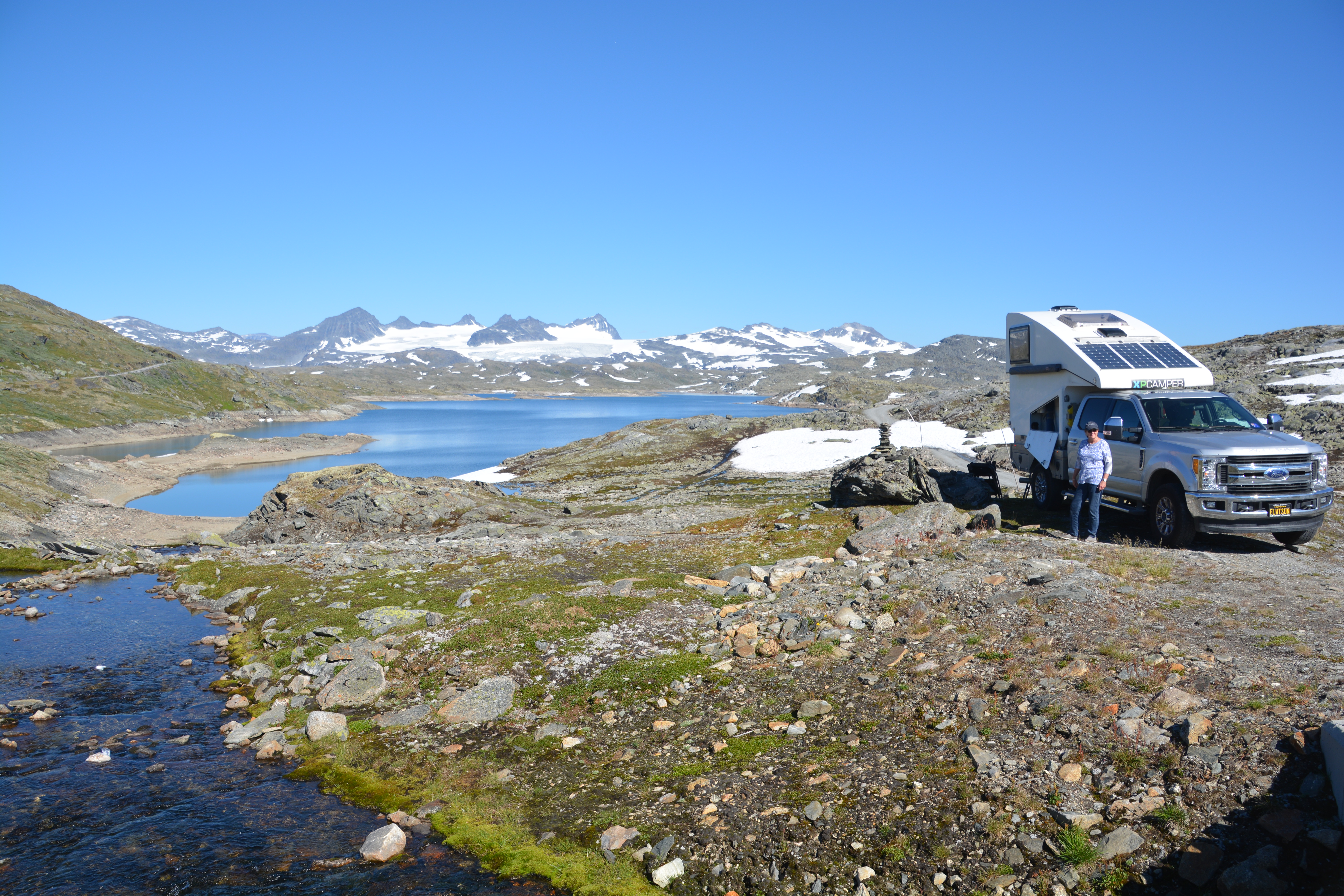


























Picture postcard perfect. Another destination for the bucket list. Your descriptions are inspiring. Thank you. Keep enjoying
Xoxo
Hi Anne and Steve, everyone needs to come to Norway, it is unbelievable…just don’t be looking for any bargains!
Hi Anne and Steve, everyone needs to come to Norway, it is unbelievable…just don’t be looking for any bargains!